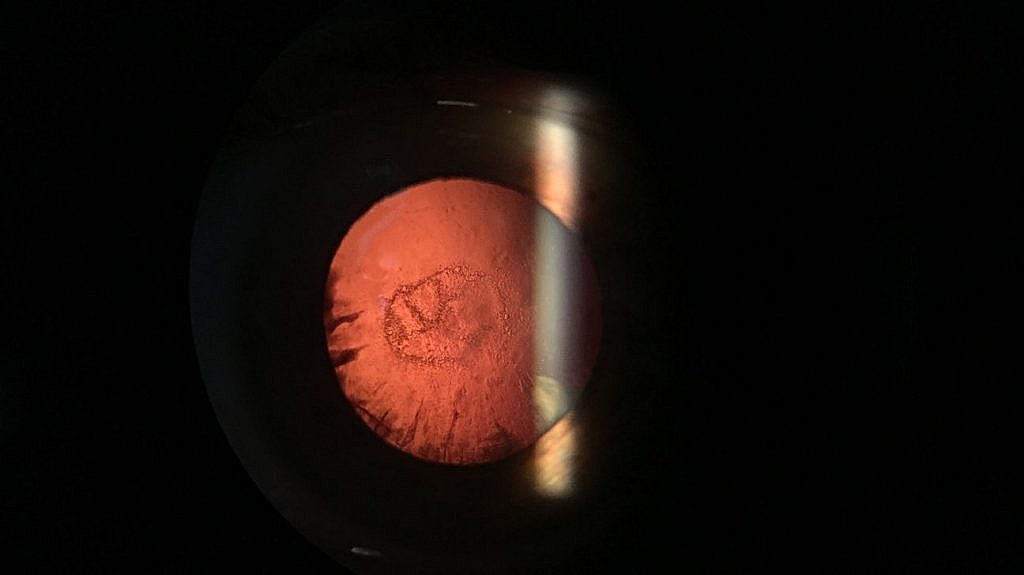Posterior Subcapsular Cataract: Causes, Symptoms, Treatment
A posterior subcapsular cataract develops on the back of the lens of your eye. It causes cloudy vision but is treatable with surgery.
Cataracts are cloudy areas that develop on the transparent lens of one or both of your eyes. A posterior subcapsular cataract develops on the back of your lens, where it borders the capsule that keeps it in place.
Posterior subcapsular cataracts often develop together with other types of cataracts. You may develop symptoms such as diminished visual acuity and seeing a halo when you look at bright lights.
Doctors can usually treat cataracts with surgery to replace your lens with an artificial lens. Most people have improved vision shortly after surgery but some people develop complications that might require a second surgery.
In this article, we examine posterior subcapsular cataracts in more detail, including their symptoms, risk factors, and treatment.

What are the symptoms of posterior subcapsular cataract?
Posterior subcapsular cataracts can cause similar symptoms as other types of cataracts, such as:
People with posterior subcapsular cataracts most often complain of glare in bright lights and double vision in one eye. Visual impairment is often more noticeable in bright lights.
What causes posterior subcapsular cataracts?
Your lens is surrounded by a layer of tissue called the lens capsule that holds it in place. Posterior subcapsular cataracts develop on the backside of your lens in the part that borders your capsule.
Cataracts develop when crystallin proteins build up in your lens and cause the loss of transparency.
According to the American Academy of Ophthalmology, a posterior subcapsular cataract often occurs due to aging but also can also develop due to:
Risk factors can include:
Posterior subcapsular cataracts make up about 10% of age-related cataracts. Over 40% of posterior subcapsular cataracts seem to occur together with other types of cataracts.
Prevent macular degeneration with our free tip sheet
Our free tip sheet highlights lifestyle habits you can adopt to help lower your risk and keep your eyes healthy. Join our macular degeneration newsletter for your free copy and expert guidance.
How do doctors diagnose posterior subcapsular cataracts?
An eye doctor may suspect you have a cataract based on your symptoms. They can make the diagnosis by performing a comprehensive eye exam. During this exam, you’ll receive eye drops to widen your pupils, and you may undergo tests such as:
Posterior subcapsular cataract grading
The World Health Organization (WHO) has developed a simplified grading system for posterior subcapsular cataracts based on the vertical size of the cataract:
| Grade | Description |
|---|---|
| 0 | Cataract is less than 1 millimeter (mm) high |
| PSC-1 | Cataract is equal to or greater than 1.0 mm high but less than 2.0 mm |
| PSC-2 | Cataract is equal to or greater than 2.0 mm high but less than 3.0 mm |
| PSC-3 | Cataract is greater than 3.0 mm |
| 9 | Cataract cannot be graded |
Posterior subcapsular cataracts in grade 3 generally need surgical treatment. Your doctor may not recommend surgery for cataracts that aren’t affecting your vision or daily functioning.
What is the treatment for posterior subcapsular cataracts?
Surgery is the main treatment for posterior subcapsular cataracts. Surgery involves removing the lens and replacing it with a synthetic lens.
An eye surgeon may use a small incision or a laser to replace the lens. The recovery time for these procedures is about the same. It usually takes around 2 to 6 weeks to make a full recovery.
The most common complication of cataract surgery is posterior capsular opacification, also called a secondary cataract. It develops when the capsular that covers your lens clouds over.
People who develop a secondary cataract may need a second surgery to remove it.
What’s the outlook for people with posterior subcapsular cataracts?
Like other cataracts, posterior subcapsular cataracts can be debilitating without proper treatment. With surgery, most people can regain high quality vision. People who don’t receive surgery will likely continue to have progressive vision loss.
About 1 in 50 people develop serious complications from cataract surgery. These can include:
Frequently asked questions
How serious is a posterior subcapsular cataract?
Posterior subcapsular cataracts can cause progressive vision loss that can affect your quality of life. Most people who receive surgery have improved vision soon after surgery.
How fast do posterior subcapsular cataracts progress?
The speed at which posterior subcapsular cataracts develop can vary depending on the cause. In a 2019 case study, researchers reported a case of dexamethasone injection causing a cataract that progressed to the mature stage in 3 weeks.
Which type of cataract is most difficult to remove?
Doctors can remove most cataracts by removing your entire lens. However, a Morgagnian cataract has a liquid center and can create some surgical challenges.
Takeaway
Posterior subcapsular cataracts develop on the back part of your lens. They can cause symptoms such as loss of visual acuity and blurry vision.
The main treatment for posterior subcapsular cataracts is surgery to remove the cloudy lens and replace it with an artificial one. Most people who receive surgery have rapidly improved vision. People who don’t receive surgery usually continue to have progressive vision loss.
### What is a Posterior Subcapsular Cataract?
A Posterior Subcapsular Cataract (PSC) is a type of cataract that forms at the back of the eye lens. It can cause problems with reading, glare, and bright lights.
### What Causes Posterior Subcapsular Cataracts?
PSC can be caused by long-term steroid use, diabetes, high myopia, or previous eye surgery. It is also associated with aging and radiation exposure.
### What are the Symptoms of Posterior Subcapsular Cataracts?
Common symptoms include difficulty reading, glare or halos around lights, and trouble seeing in bright lights. These symptoms may appear suddenly and progress rapidly.
### How is a Posterior Subcapsular Cataract Diagnosed?
An eye care professional diagnoses PSC through a comprehensive eye exam, which includes a visual acuity test and dilated eye examination using a slit lamp.
### What are the Treatment Options for Posterior Subcapsular Cataracts?
The main treatment for PSC is cataract surgery, where the cloudy lens is replaced with an artificial one. Early stages may be managed with prescription glasses or contact lenses.
### Can Posterior Subcapsular Cataracts Be Prevented?
Preventive measures include managing underlying health conditions, wearing sunglasses to protect from UV rays, and avoiding prolonged steroid use when possible.
### How Quickly Do Posterior Subcapsular Cataracts Progress?
PSC tends to progress more quickly than other types of cataracts. Symptoms may worsen rapidly over months, requiring timely medical attention.
Certainly, here is an SEO-optimized Frequently Asked Questions (FAQ) section based on the topic of Posterior Subcapsular Cataract:
### What is a Posterior Subcapsular Cataract?
A Posterior Subcapsular Cataract is a type of cataract that forms at the back of the lens capsule in the eye, causing vision problems.
### What causes Posterior Subcapsular Cataracts?
Posterior Subcapsular Cataracts can be caused by factors such as prolonged use of steroids, diabetes, eye injuries, or radiation exposure.
### What are the symptoms of a Posterior Subcapsular Cataract?
Symptoms include blurred vision, glare or halos around lights, difficulty seeing in bright light, and trouble reading.
### How is a Posterior Subcapsular Cataract diagnosed?
An eye doctor can diagnose this type of cataract through a comprehensive eye examination, including a slit-lamp exam.
### What treatment options are available for Posterior Subcapsular Cataracts?
Treatment typically involves cataract surgery to remove the cloudy lens and replace it with an artificial lens, improving vision.
### Can Posterior Subcapsular Cataracts be prevented?
While not all cases can be prevented, controlling risk factors like managing diabetes and avoiding excessive steroid use can help reduce the risk.
### How effective is cataract surgery for Posterior Subcapsular Cataracts?
Cataract surgery is highly effective, with most patients experiencing significant improvement in vision after the procedure.








Thank you for this informative post! Understanding the causes and symptoms of posterior subcapsular cataract really helps in identifying potential risk factors early on. It’s reassuring to know that there are effective treatments available. Would love to hear more about any new advancements in treatment options.
This is a very informative post! I appreciate the detailed explanation of posterior subcapsular cataracts. The breakdown of causes and symptoms is particularly helpful for someone trying to understand more about this condition. Also, the section on treatment options provides a clear overview of what patients might expect. Thank you for sharing this valuable information!
This is a really informative post! I learned a lot about the different causes of posterior subcapsular cataracts, including how certain medications and medical conditions can increase the risk. The breakdown of symptoms was helpful too, as it made me realize the importance of regular eye checks. Thank you for also including various treatment options—it’s great to know there are effective ways to manage this condition. Keep up the great work in spreading awareness!
This article provides a comprehensive overview of posterior subcapsular cataracts, highlighting their causes, symptoms, and treatment options. It’s great to see such detailed information, which helps in understanding how lifestyle choices and medical conditions can contribute to this type of cataract. The inclusion of both surgical and nonsurgical treatment options is particularly useful for those seeking to manage their eye health proactively. Thank you for sharing this insightful resource!
Thank you for this informative post! I didn’t know much about posterior subcapsular cataracts before and your explanation on the causes and symptoms was really clear. It’s helpful to know about the treatment options available too. Looking forward to more posts about eye health!
Thank you for this informative post on posterior subcapsular cataracts. It’s helpful to understand the various causes and symptoms associated with this type of cataract. I appreciate the detailed explanation of treatment options as well. This knowledge is crucial for anyone experiencing vision issues or looking to learn more about ocular health. Keep up the great work in spreading awareness!
This is a very informative post! It’s crucial to be aware of the causes and symptoms of posterior subcapsular cataracts, as early detection can significantly impact treatment outcomes. Thanks for sharing the treatment options as well, it’s helpful to know what to expect from different procedures.
This is a very informative post! It’s great to learn about the different causes and symptoms of posterior subcapsular cataracts. Understanding the available treatment options is also very helpful for those who might be dealing with this condition. Thanks for sharing such valuable information!
Thank you for the informative post! It’s really helpful to see the causes and symptoms of posterior subcapsular cataract laid out clearly. The explanation of treatment options is also very reassuring. I appreciate the detailed insights and practical advice for dealing with this condition.